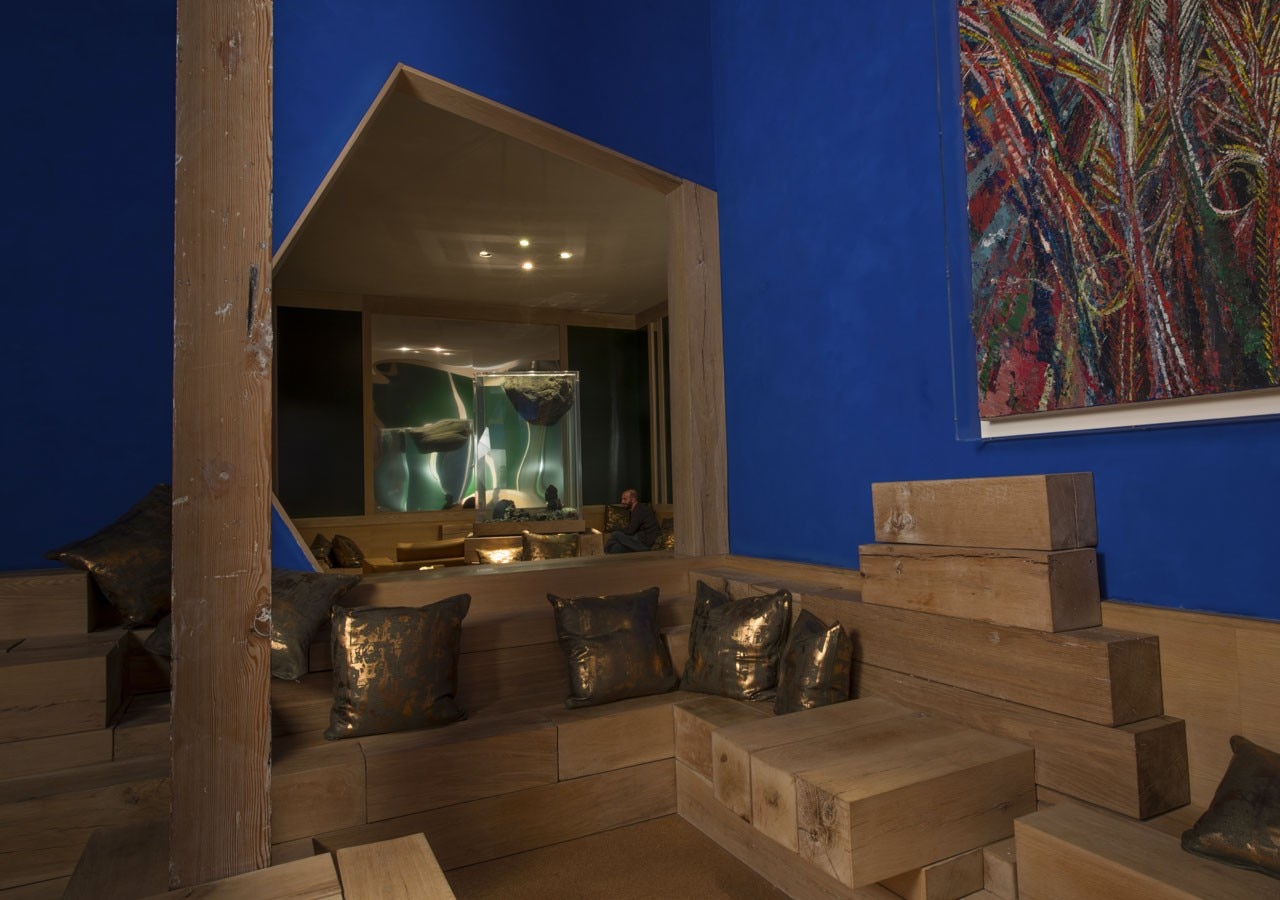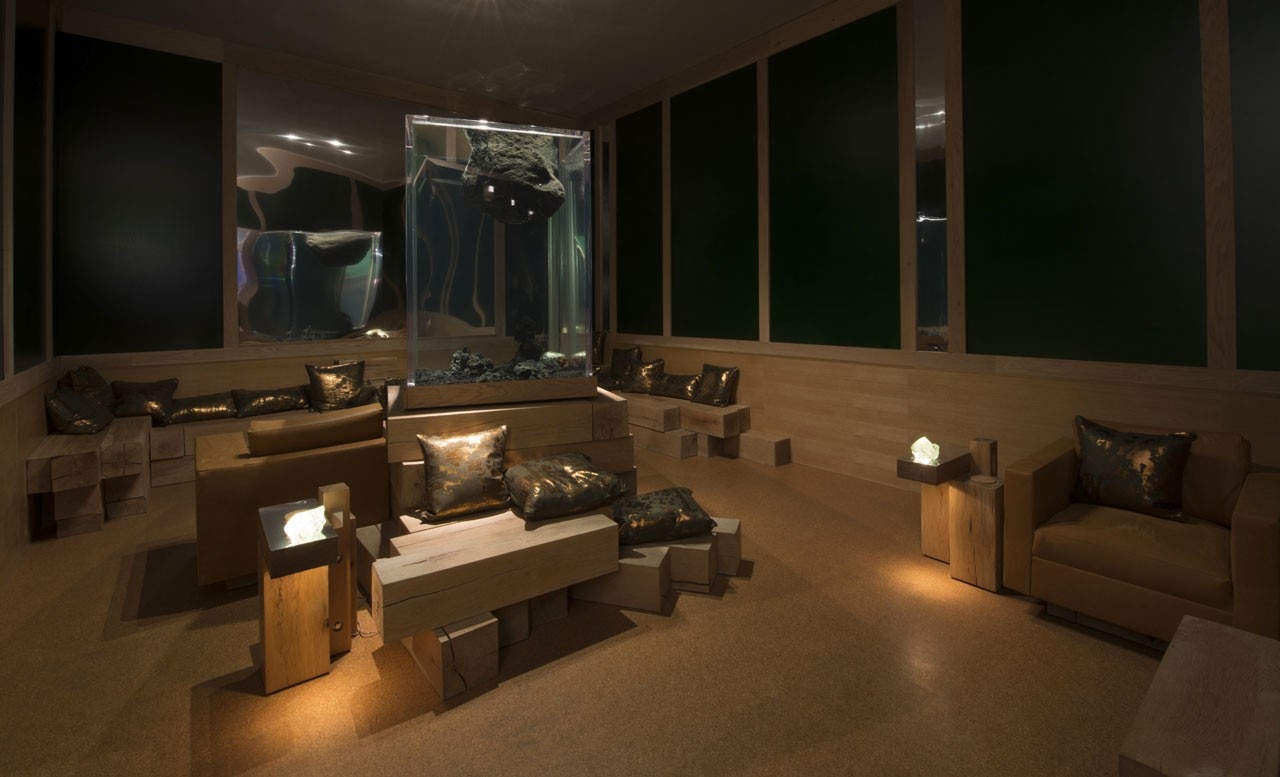
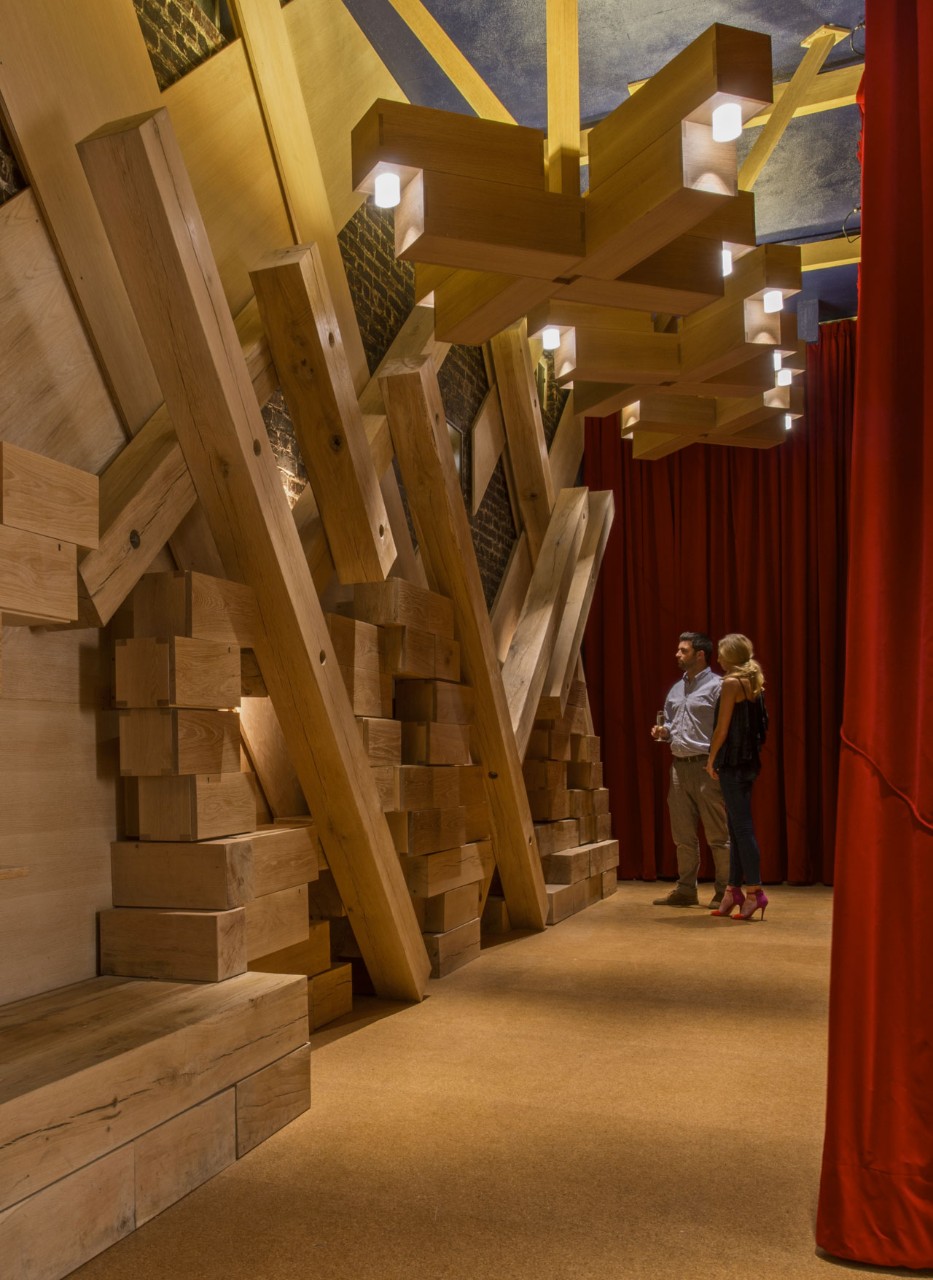
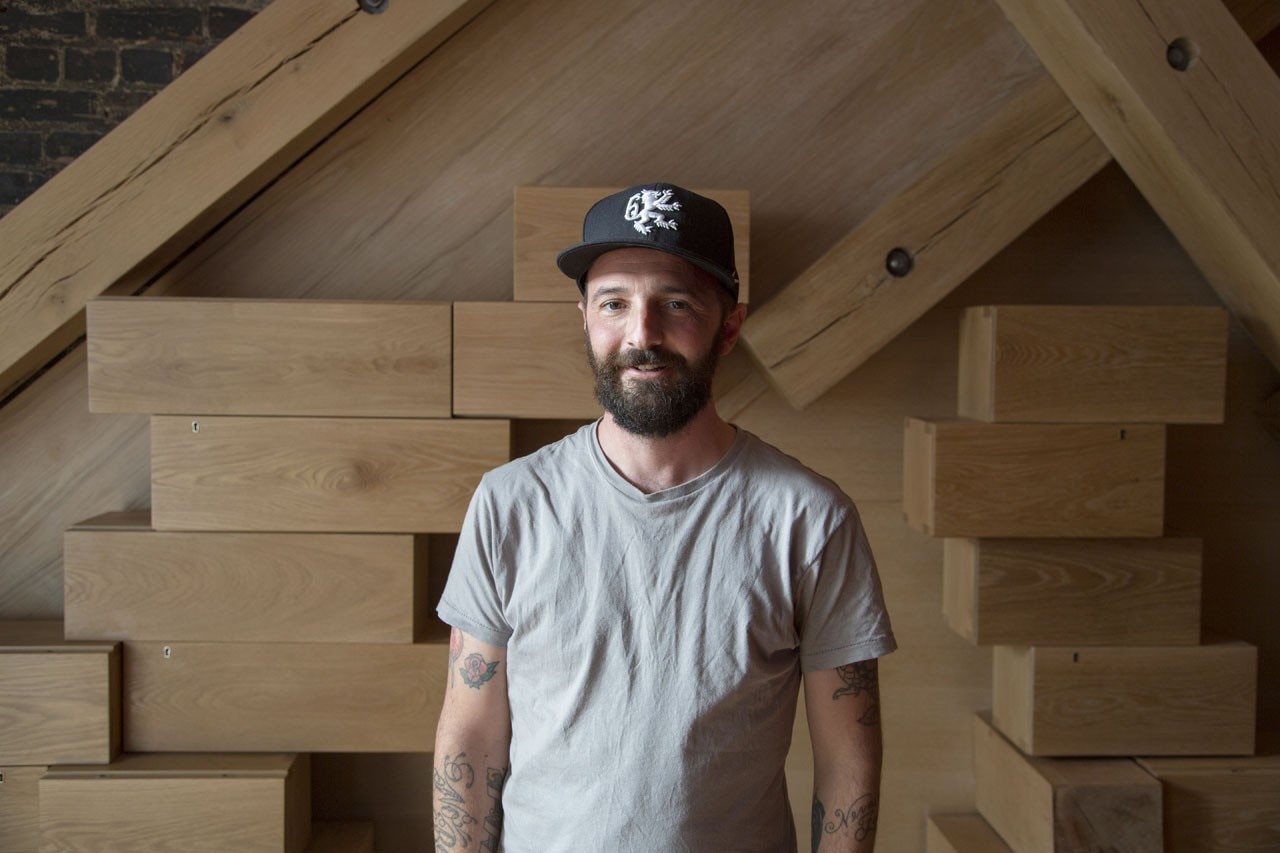
Located in what used to be storage area, in the back room of a building in Hollywood, The Chalet is accessed through an unmarked back door. The Chalet is an abstraction of the social choreography of its city: In Los Angeles, the place to be is on the guest list of a private house party. Another place to be is on the way to a private house party in a private car. Chalet has all the markings of a private, or exclusive or “underground,” space. At the same time, it mimics some of the gestures and physicality of, say, a Swiss Chalet, a public social space that runs counter to the way people navigate each other in L.A.
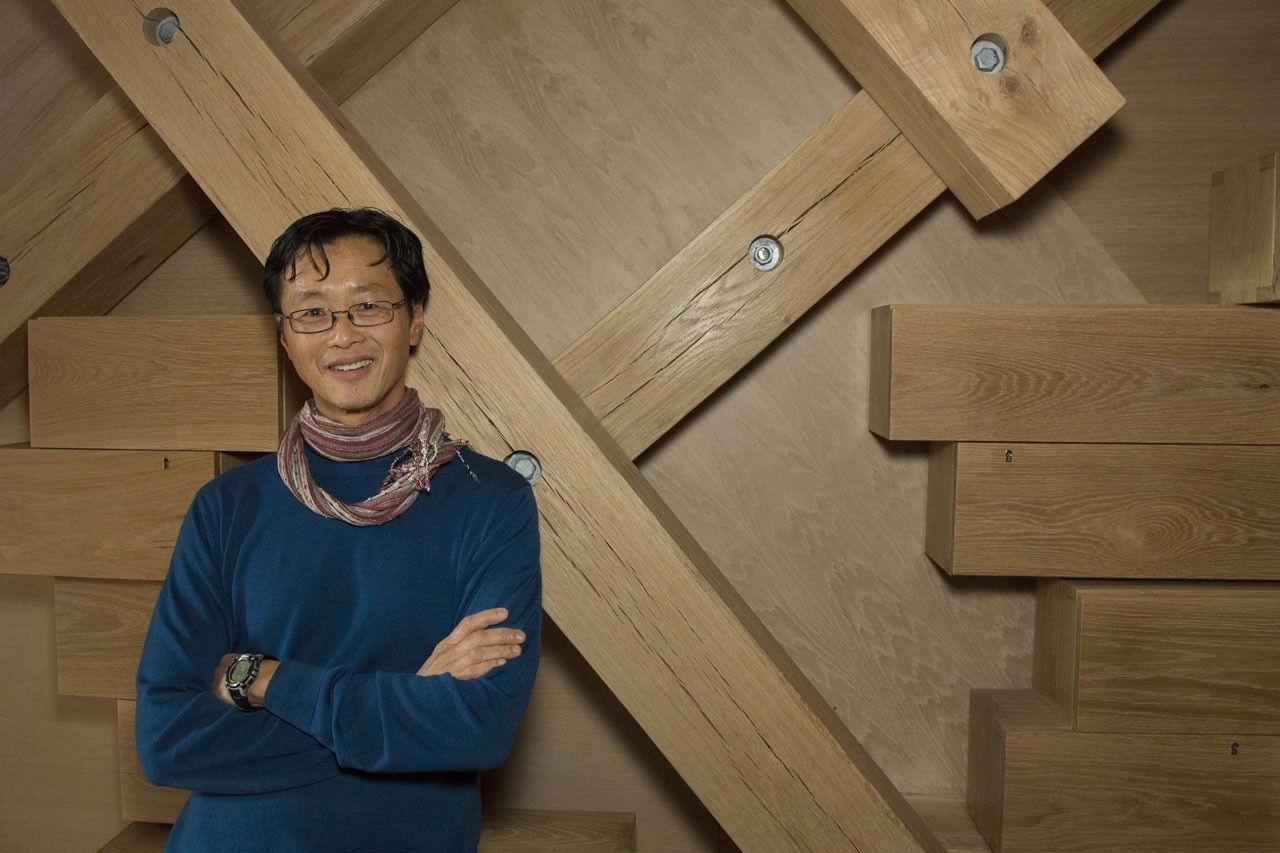
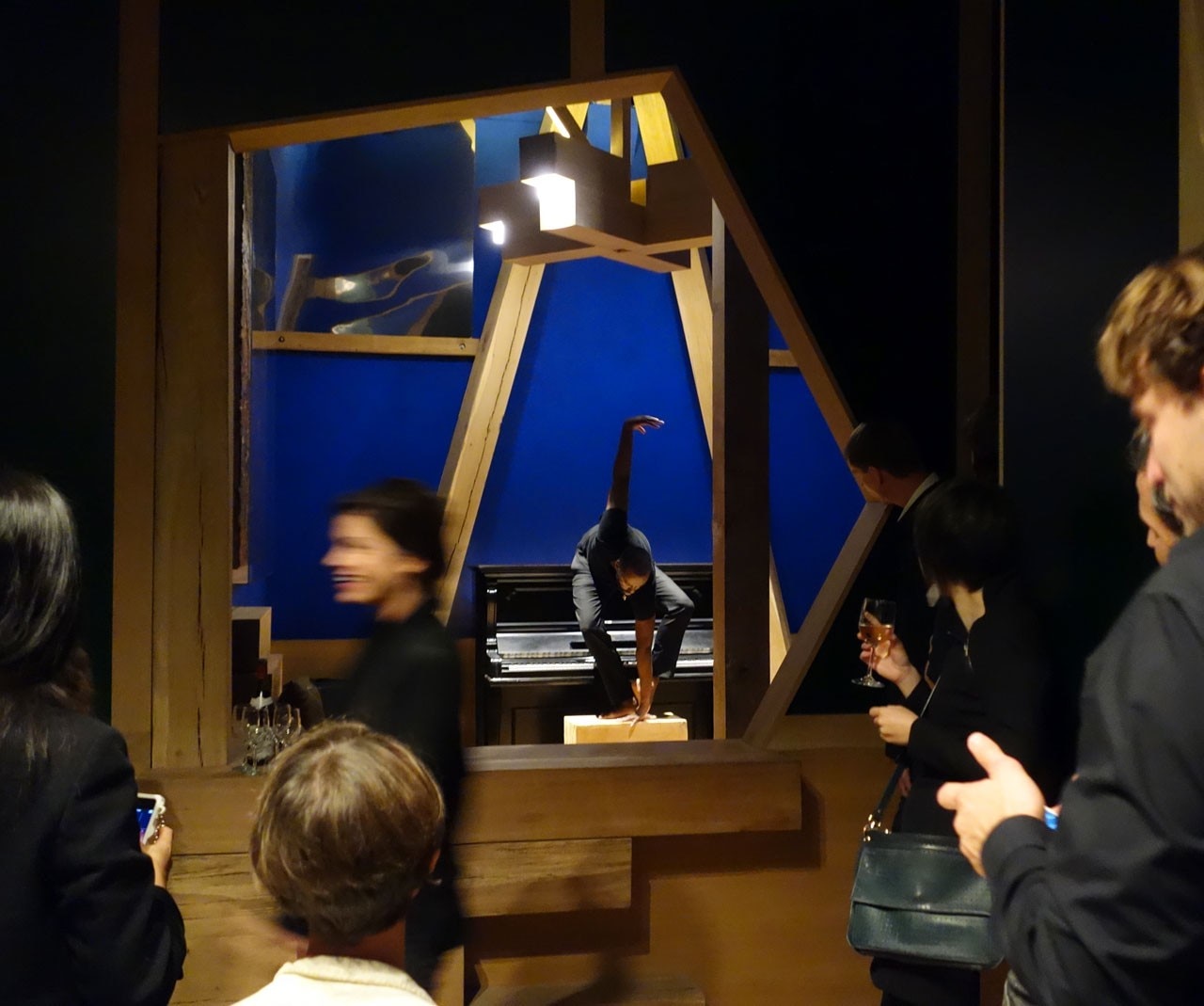
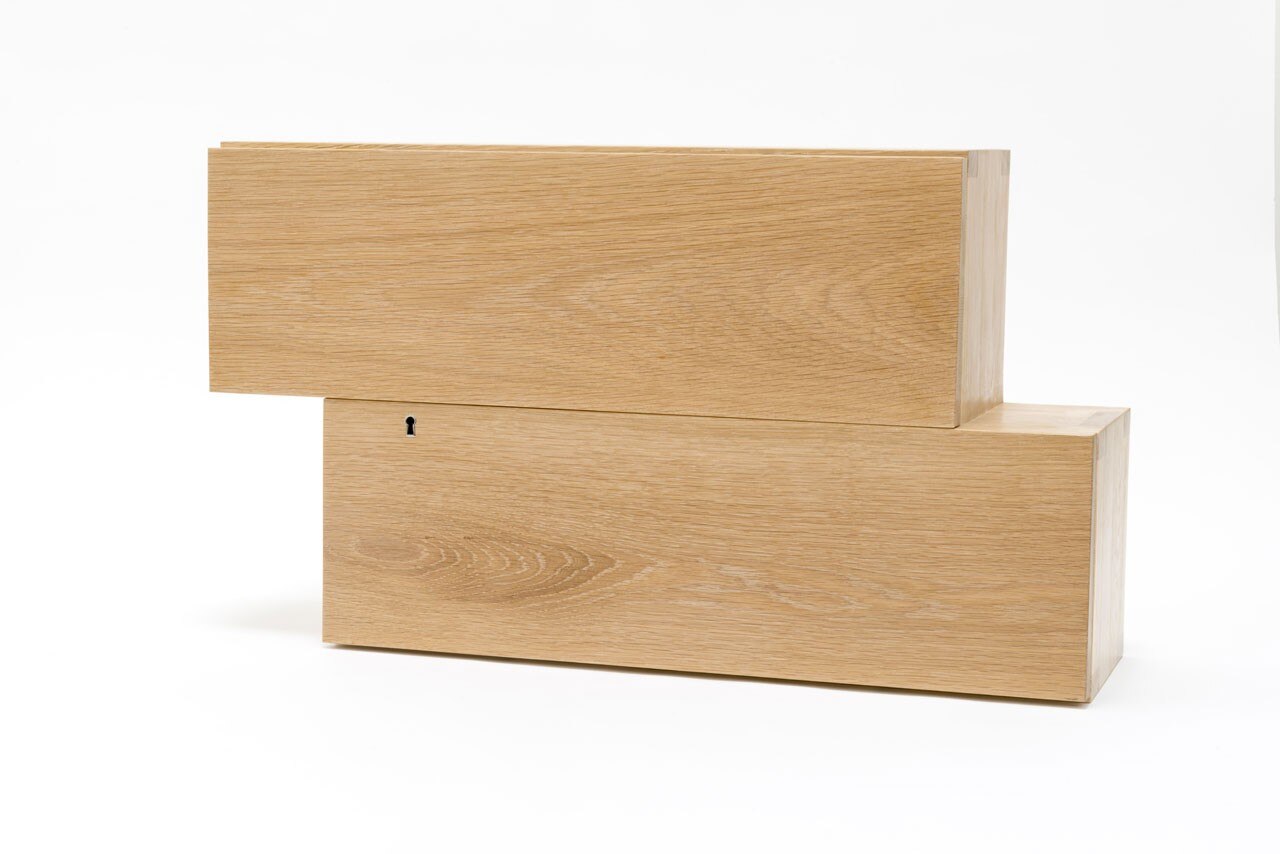
“All the materials in here have a story and function,” Golia tells me, sitting in Chalet one recent afternoon. “That’s why I think it’s a very classic architecture. The materials are humanly and emotionally chosen according to reason. Think about the blue plaster in the amphitheatre: that comes from the need for insulation and acoustics, introduced not as decor but in a flat way. But it’s also very beautiful and surprising to the touch. The Chalet is architecture that should be touched.”
More than a year ago, I first met Golia and Chan at The Chalet, while it was still a work in progress. In our conversation, then, The Sistine Chapel came up as a kind of example for what Chalet could be. In our conversation now, the words ‘Sistine Chapel’ leave my mouth again, as I begin a question. “Oh, mamma mia,” Golia says before I finish. “You have to start with the one idea that Edwin hates most.”
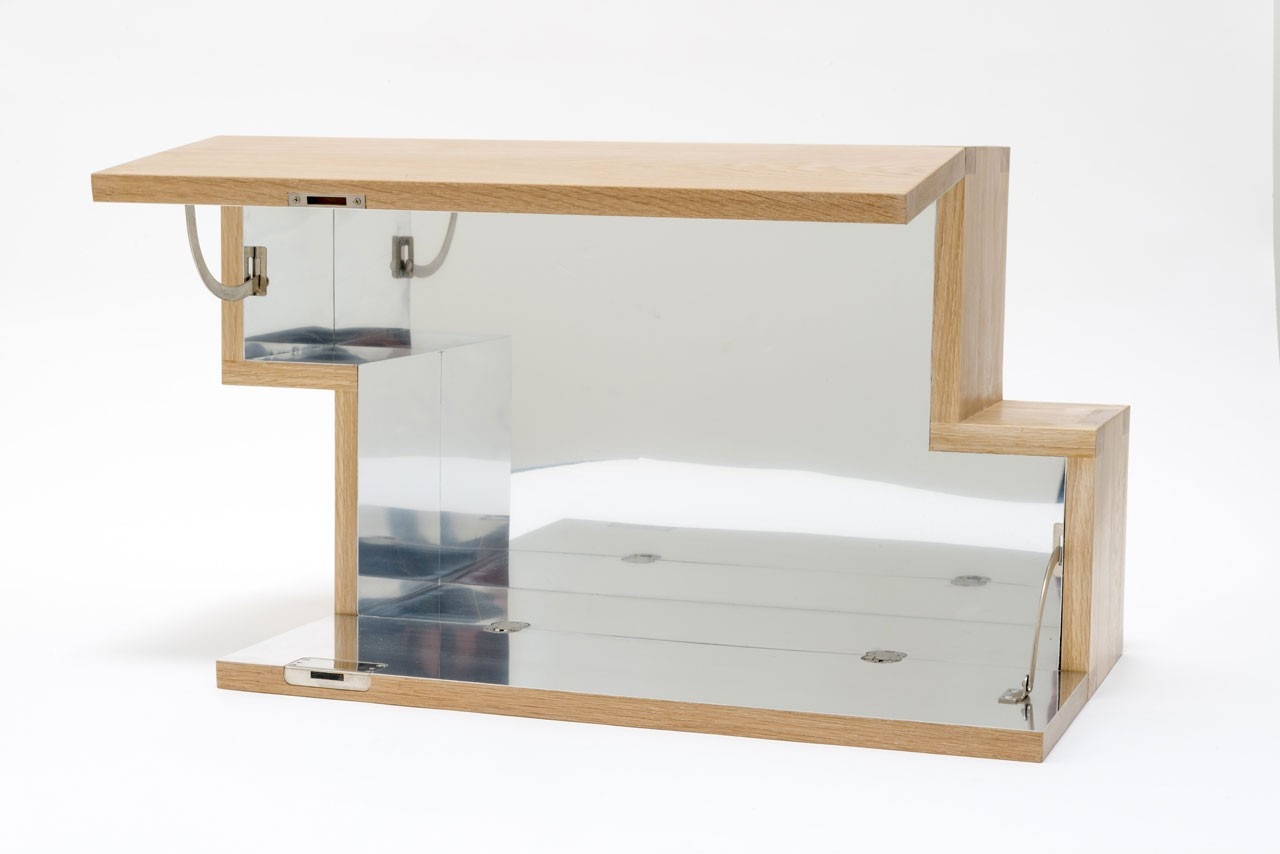
Edwin Chan: I don’t hate the idea, I just get nervous when you say it aloud. I’m cautious about setting out to design a masterpiece. I’ve learned that it’s better to simply design a ‘project,’ without the expectation that it will be The Sistine Chapel, and allow the project to evolve into something bigger.
Piero Golia: But The Sistine Chapel, Versailles, The Colosseum – these are all very basic, technical examples. It doesn’t mean that I want to build something ‘famous,’ I just want to talk about a type of architecture that is not contemporary. When you build The Sistine Chapel or Versailles, you never think about return, right? Your goal is to build something people will love, no matter how economically stupid this operation is for you. I really think that’s what we did here. We built a place for no other reason than to provide something beautiful for the people, something they could enjoy, which would make them happy.
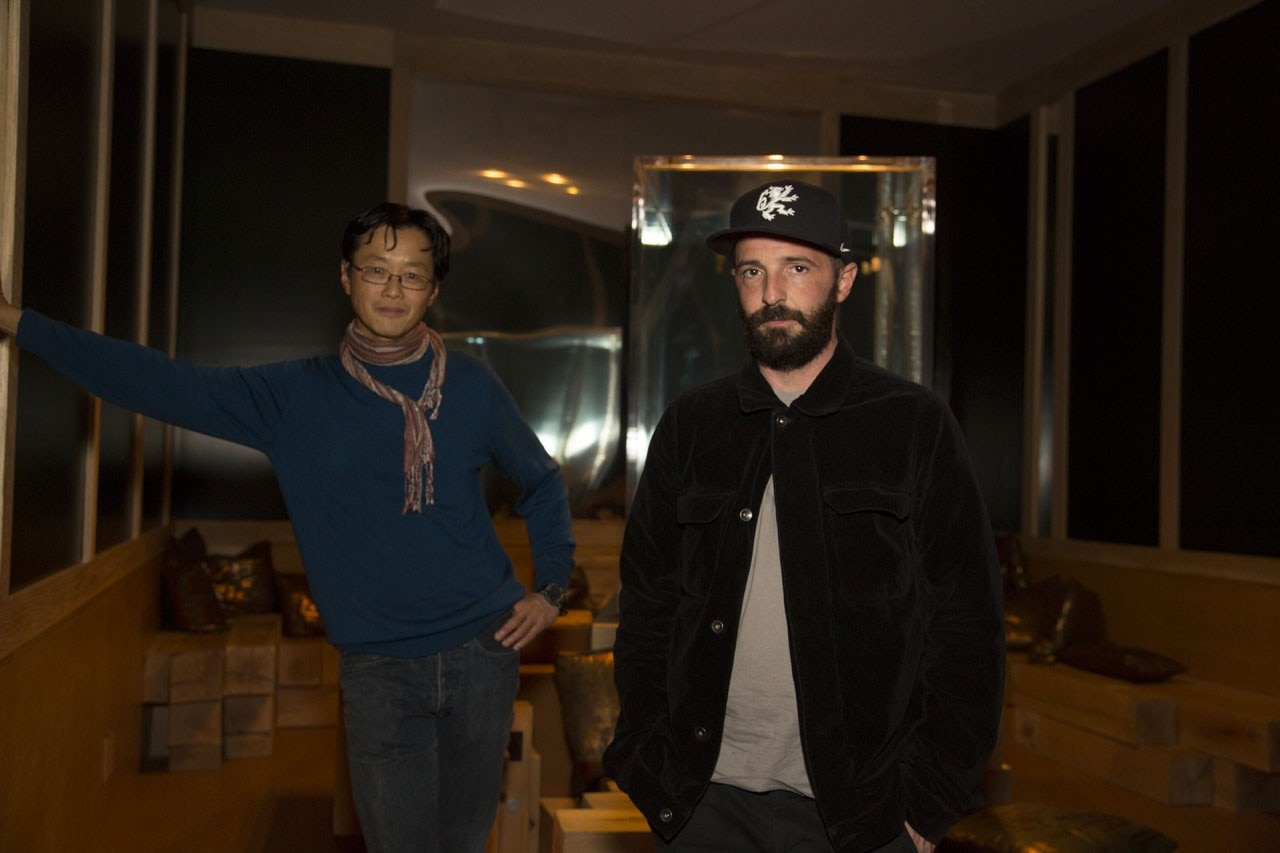
EC: I understood from the moment we started talking about The Chalet that it had to be a labor of love. You cannot do this kind of project without the kind of passion that Piero describes. There's no other way this could have come together.
PG: I wanted to work with an architect who concentrated more on people than theory. It was very important for me that people felt pleased here; that they would later tell me, ‘This is exceptional.’ An artist is not enough to achieve this. The architecture is what binds everything together, what surrounds you. Everything you touch in this place, feels good.
Is Chalet very specific to Los Angeles, or can you see it being removed and placed somewhere else?
PG: When we first started, I thought Chalet must be something very connected to L.A. —a medium that could make it easy to bring together actors and great artists, for example. Here, you have these people around the corner. Anywhere else, and giving them a reason to leave home becomes more difficult. If I had put The Chalet on top of a mountain in Tibet, for example, first I would need to get the people to Tibet, then up the mountain, and only then could they come to Chalet.
EC: I do that sometimes.
PG: Well, more and more, I'm realizing that maybe people will go to the middle of nowhere for the right thing. So, yes, now I can answer that this is an exportable model.
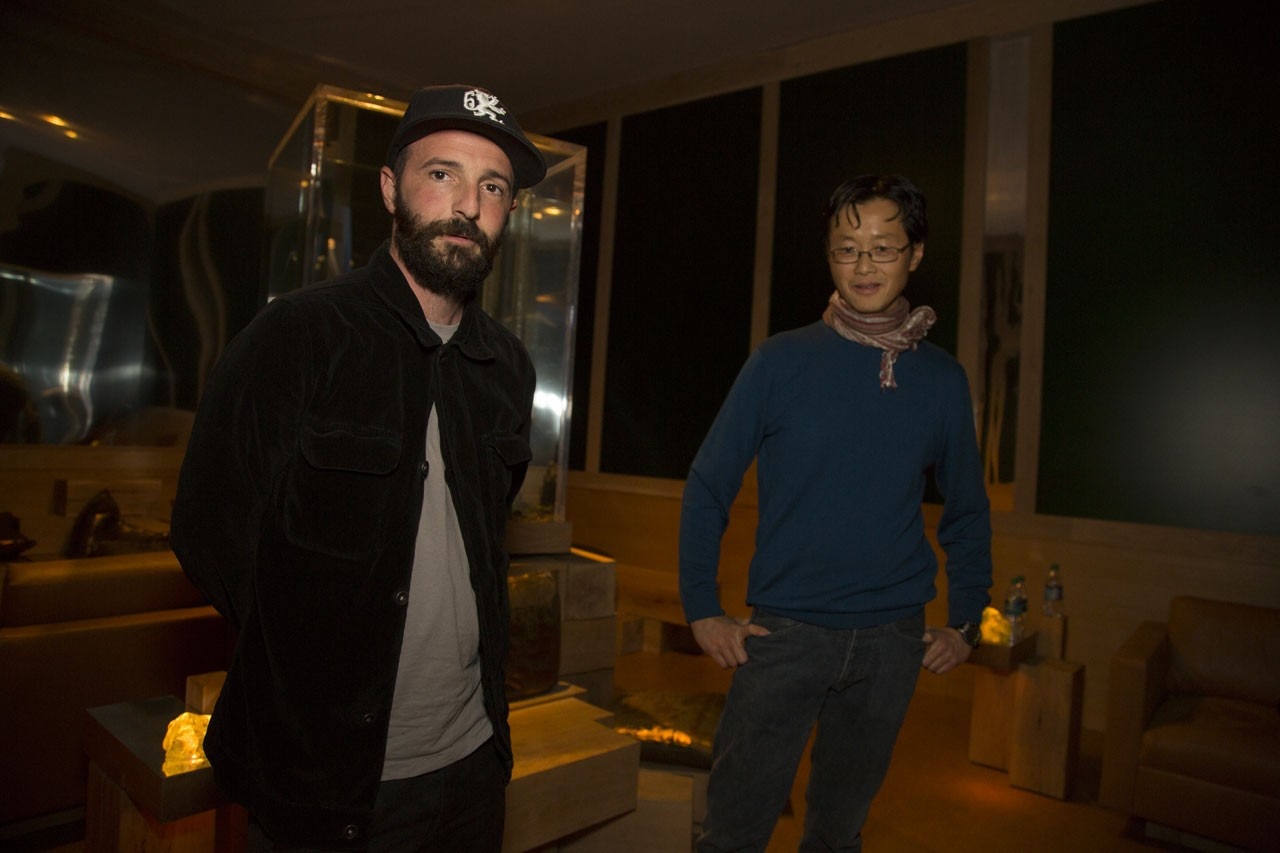
How have you observed people treating The Chalet — like an artwork that shouldn’t be touched, or maybe like an extension of your private house?
PG: I noticed that it took a moment. The first nights, people would arrive and wander for an hour before sitting down. Then, slowly, slowly, they became more brave and realized that they could relax and actually touch the space, sit down in it. After one event, I got this heartbreaking e-mail from [legendary dancer/choreographer] Simone Forti, saying: ‘Usually, I go someplace, I don’t know anybody and because I’m shy, I end up in a corner with a glass of white wine. But last night at Chalet, I spent all of my time talking with people. I think it was the space. Otherwise I would have been in my corner.’ So, this isn’t a lounge, it's not a vacation home, or a performance space. There is no one strong line between the rooms inside. There is no strong direction to how people must sit or behave in them.
EC: Many things we did here were a big risk, because of that idea: all of the wood elements, all of these wood benches. I didn’t know how people would respond to them, but I’m happy to see that, so far, they’ve embraced all of our risks. Some of the guests are used to a different idea of comfort — they may not initially want to sit in this kind of an environment. But ultimately, the materiality of the place has invited people to participate in it and engage with each other in a way they don’t otherwise. The physical, tactile aspect of The Chalet is a surprising experiment and it seems to be working.
PG: I do a lot of imaginary shopping. I buy architecture, I buy cars. I visit them and think about whether or not they’re good investments. The only thing I don't do is be able to afford them. So today I was ‘buying’ this Frank Lloyd Wright house. I'm obsessed with Frank Lloyd Wright. I really like the feeling of ‘complete’ architecture. But then I realized something: Frank Lloyd Wright designed for people who knew exactly how many guests were coming over for dinner. That number is fixed into the architecture. The seating has a very strong orientation. You can't squeeze more people in and you can’t invite only two people, without noticing that you fucked up.
The beauty of The Chalet is that this place works with five, ten, 20, 50 people. It’s open to complete reinterpretation. I can sit here and talk with one person all night, or I can turn around and be part of a big group. There is a perfect modularity here. It also doesn’t matter if it’s midnight or 11a.m. in here; there are pockets in The Chalet that defend us from perceptions of what we don’t want. The place feels alive.
You know, sometimes the ugly thing of architecture is when you feel that somebody put flowers in the vase. Edwin understood what I meant by this exactly. That’s why here, when everything is where it should be, you feel it’s because that’s how God wanted it.


